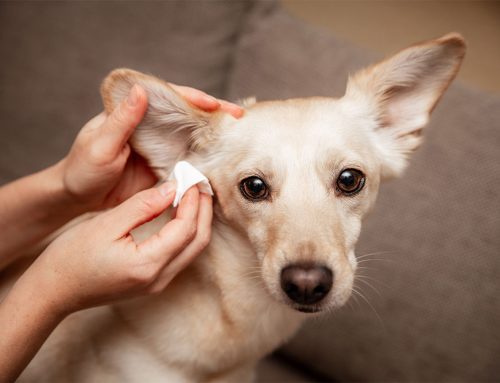You strive to ensure your pet’s physical and emotional wellness. Being able to understand and clearly explain to your veterinary professional the changes in your pet’s behavior is critical to modifying your furry pal’s behavior issues. Discussing your pet’s behavioral changes with your veterinarian can provide you with the insights and tools you need to address them. Pet behavior problems are most often the result of insufficient training and socialization, or underlying phobias or existing medical issues. Therefore, our Oliver Animal Hospital team in South Austin describes effective strategies for talking about your pet’s behavior and how to advocate for your furry pal’s emotional and mental wellness.
Pet behavior: One size doesn’t fit all
Each species exhibits their own natural or instinctive behaviors. Cat and dog behaviors—as you probably know—are vastly different. Digging and barking are as natural to dogs as scratching and climbing are to cats. Each dog breed has typical behaviors associated with their origins and purpose. For example, small-breed dogs that were bred for rodent hunting are most likely to want to dig, since this is in their genes.
Problem behaviors in cats and dogs are often amplified versions of instinctual behaviors, but they can be annoying, if not destructive. Behaviors, such as marking, excessive barking, and destroying shoes, can be frustrating and confusing as pet owners wonder what course of action to take. This is why learning how to talk with your veterinarian about your pet’s inappropriate behavior is important.
Common pet behavior problems
Any normal behavior in excess can become a problem, so do not feel alone if your pet is “acting up,” as many pet owners are in your shoes. Consider these common negative behaviors in cats and dogs:
- Hyperactivity
- Aggression (e.g., biting, growling, hissing)
- Spraying or eliminating inside the home or outside of the litter box
- Resource (i.e., food, treats, toys, other cherished items) guarding
- Destructive chewing
- Chronic barking or howling
- Digging
- Chasing
- Humping
- Leash pulling
- Running away or escaping
- Hiding
- Separation anxiety
- Fighting with other pets
Tips for communicating effectively with your veterinarian

Your veterinarian is a compassionate, knowledgeable source of information and advice on all things related to pet health. Behavior is an integral part of your furry pal’s health, too. In preparation for and during your talk with your vet regarding your pet’s behavior, follow these tips:
- Prepare notes about the behavior — Make thorough notes about when changes in your pet’s behavior started and in what situations these issues are prominent. In addition, be ready to describe their daily routine (i.e., the amount they eat, exercise, eliminate). If you have noticed specific events that trigger the problem behaviors, make note of them, too. The better our team understands the situation, the better equipped we are to come up with a positive solution to your pet’s inappropriate behaviors.
- Communicate honestly and openly — Complete transparency about your pet’s behavior, even if it seems trivial, gives us the greatest chance of providing an appropriate solution. Veterinarians have heard it all about pet behavior, so we can assure you we don’t judge the situation. Our team understands and, like you, we want your pet to have a happy life.
- Ask many questions — Ask our team as many questions about your pet as you like. In addition, be sure to ask for clarification if the information is confusing or you don’t understand something we’ve explained about your cat’s or dog’s behavior. Understanding the causes and conditions that led to the problem behavior helps you understand how to address it at home.
- Collaborate with your veterinarian — Keeping your pet in optimal physical and mental health requires a collaborative approach between our team and you. Ensure you keep an open mind when we discuss recommendations for behavior modification techniques, training and socialization, and medications.
- Monitor changes after a consultation — As you implement our recommendations, continue to monitor your pet’s progress, setbacks, and new behaviors. Stay in touch with your veterinarian and attend all follow-up appointments to ensure you and your pet stay on track with behavior modification.
Open communication with your veterinarian about your pet’s behavior is essential for promoting happiness and well-being. By approaching these conversations with preparation, honesty, and a collaborative mindset, our Oliver Animal Hospital team can work with you to help resolve your pet’s inappropriate behavior concerns. Contact us for additional pet behavior information and to schedule your pet’s behavior assessment consultation.








Leave A Comment